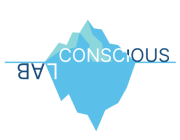NONCONSCIOUS PRIORITIZATION
Perceptual conscious experiences result from non-conscious processes that precede them. Previous work from the lab documented a new characteristic of the cognitive system: the speed with which it prioritizes stimuli are prioritized to conscious experiences. This Nonconscious Prioritization Speed (NPS) is ubiquitous across a wide variety of stimuli, and generalizes across visual masks, suppression tasks, and time. Our findings further show that it cannot be explained by variation general speed, perceptual decision thresholds, short-term visual memory, or three networks of attention (alerting, orienting and executive). Our current work explores downstream consequences of NPS and, more specifically, how NPS may contribute to the research of clinical disorders, as well as components of perception and phenomenological experience. We also study nonconscious prioritization in context of valence and emotions.
Consciousness and Cognition, 2025
NONCONSCIOUS PROCESSING (IN THE AUDITORY DOMAIN)
We study factors that influence nonconscious processing and prioritization to consciousness of auditory contents, including spoken words and speech streams. We exmine how our attention is captured, and what determines the depth of computations underlying nonconscious speech perception, and how does the cognitive system prioritizes non- conscious information to consciousness.
GROUPING INFORMATION FOR DECISIONS
How do people make decisions based on multidimensional observations? This new project in the lab examines how people structure incoming information in order to form an evaluation/decision. To illustrate, when evaluating stock brokers one can simply look at the performance of their entire portfolio, or first group by sector (e.g., tech, medical, etc.), and then use the grouped information as a basis for evaluation. We explore how principles of salience, relevance, and cognitive ease determine whether grouping occurs or not and what dimensions are used for grouping. Our findings lead us to propose a new theory of decision- making from multidimensional information.
TRUST IN PHENOMENOLOGY
People tend to spontaneously accept their own conscious experiences – be it intuitions, emotions, or percepts – as true, reliable representations of information sampled from the world, and to behave accordingly. However, this tendency can’t always be justified: Sometimes we perceive movement while watching static visual illusions, an insight into how to solve a problem is simply wrong, and a thought is completely misguided. We develop methods of measuring Trust in Phenomenology – an individualized measure of how much does one trust her conscious experiences. While varying across individuals and contexts, the Trust in Phenomenology dimensions successfully accounts for dissociative patterns of metacognitive appraisals, behavioral tendencies, personality traits, problem solving, and accuracy in perceptual judgment.
CURIOSITY
In this work, we propose, develop and test, a new model of (epistemic) curiosity. This model allows us to offer an account of a fundamental paradox in modern human behavior – the discrepancy between the knowledge we want to gain, and the information we end up consuming. In the new model we develop, the paradox is a natural outcome of the temporal dynamics of two psychological factors that shape epistemic curiosity. The new model conceptualizes curiosity as a bi-dimensional psychological phenomenon, where one factor is the urge to approach information, and the other is an evaluation of how interesting it might be. We currently expand the model beyond curiosity.
Cognition, 2025
MINORITY SALIENCE & BLINDNESS
Our cognitive system is tuned toward spotting the uncommon and unexpected. We propose that individuals coming from minority groups are, by definition, just that—uncommon and often unexpected. Consequently, they are psychologically salient in perception, memory, and visual awareness. This minority salience creates a tendency to overestimate the prevalence of minorities, leading to an erroneous picture of our social environments—an illusion of diversity. We documented minority salience and its effects on decisions in a recent paper. New projects examine downstream consequences of minority salience, and the role that context expectations play. In our new project we examine what might be thought of as the complementary phenomenon: blindness to minority absence. Succinctly put, we often do not realize that our environment is completely devoid of minority members. This is true in real life contexts, and in lab experiments.

